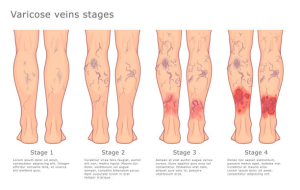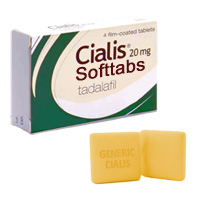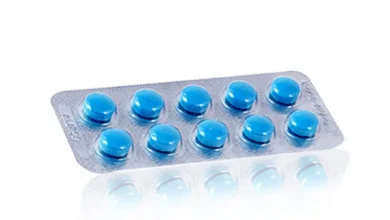Understanding the Abnormal Veins

Abnormal veins, such as varicose veins or spider veins, are a common concern for many people. These conditions can be more than just a cosmetic issue—they often indicate underlying problems with the circulatory system that may require medical attention. Understanding what abnormal veins are, why they occur, and how they can be treated is essential for maintaining both your vascular health and overall well-being.
What Are Abnormal Veins?
Abnormal veins are veins that have become enlarged, twisted, or otherwise deformed due to underlying issues with blood flow. The most common types of abnormal veins include:
- Varicose Veins: These are large, swollen veins that often appear blue or dark purple and are visible just under the surface of the skin. Varicose veins typically develop in the legs and can be painful or cause discomfort, especially after standing or sitting for long periods.
- Spider Veins: Smaller and less prominent than varicose veins, spider veins are thin, red or blue veins that can form a web-like pattern on the surface of the skin. They commonly appear on the legs and face and are usually painless, though some people may experience itching or mild discomfort.
What Causes Abnormal Veins?
The primary cause of abnormal veins is a condition known as venous insufficiency. This occurs when the valves in the veins, which help regulate blood flow back to the heart, become weak or damaged. When these valves fail, blood can flow backward and pool in the veins, causing them to enlarge and become distorted. Several factors can contribute to the development of venous insufficiency and, subsequently, abnormal veins:
- Genetics: If you have a family history of varicose or spider veins, you are more likely to develop them yourself.
- Age: As you age, the valves in your veins can weaken, making it more difficult for blood to flow upward against gravity.
- Gender: Women are more likely to develop abnormal veins, particularly due to hormonal changes during pregnancy, menstruation, or menopause.
- Pregnancy: The increased blood volume and pressure on the veins during pregnancy can lead to the development of varicose veins.
- Prolonged standing or sitting: Occupations that require long periods of standing or sitting can increase pressure in the veins, contributing to vein problems.
- Obesity: Excess weight can put additional pressure on the veins, increasing the risk of venous insufficiency.
What Are the Symptoms of Abnormal Veins?
While some abnormal veins, particularly spider veins, may not cause any symptoms, others, like varicose veins, can lead to a range of discomforts and complications, including:
- Aching or Throbbing Pain: Varicose veins often cause pain or a heavy feeling in the legs, particularly after standing or sitting for extended periods.
- Swelling: The legs or ankles may swell, especially at the end of the day.
- Itching or Irritation: The skin around varicose veins can become dry, itchy, or irritated.
- Skin Discoloration: Over time, the skin around the affected veins may darken, often taking on a reddish-brown color.
- Ulcers: In severe cases, varicose veins can lead to the development of painful sores or ulcers on the skin, particularly around the ankles.
If you experience any of these symptoms, it’s important to seek medical advice to determine the best course of action.

How Are Abnormal Veins Diagnosed?
Diagnosing abnormal veins typically begins with a physical examination and a review of your medical history. Your healthcare provider may ask about your symptoms, lifestyle, and family history to determine the underlying cause of your vein problems. To confirm the diagnosis and assess the severity of the condition, additional tests may be performed, such as:
- Doppler Ultrasound: This non-invasive test uses sound waves to create images of the veins and assess blood flow. It can help identify areas of venous insufficiency or detect blood clots.
- Venogram: In some cases, a venogram may be used to get a more detailed view of the veins. This test involves injecting a contrast dye into the veins and taking X-rays to highlight any abnormalities.
These diagnostic tools are essential for developing an effective treatment plan tailored to your specific needs.
What Are the Treatment Options for Abnormal Veins?
Treatment for abnormal veins depends on the severity of the condition and the symptoms you are experiencing. Common treatment options include:
- Compression Stockings: Wearing compression stockings can help improve blood flow in the legs, reduce swelling, and alleviate symptoms of varicose veins. These stockings apply pressure to the legs, helping to push blood back up toward the heart.
- Sclerotherapy: Sclerotherapy is a minimally invasive procedure that involves injecting a solution directly into the affected veins, causing them to collapse and fade over time. It is commonly used to treat spider veins and smaller varicose veins.
- Laser Therapy: Laser treatments can be used to target and close off small varicose veins and spider veins, reducing their appearance and associated symptoms.
- Endovenous Ablation: This procedure uses radiofrequency or laser energy to heat and seal off larger varicose veins, redirecting blood flow to healthier veins.
- Vein Stripping and Ligation: In more severe cases, surgical procedures such as vein stripping and ligation may be necessary to remove or tie off damaged veins.
- Lifestyle Changes: Making lifestyle changes, such as exercising regularly, maintaining a healthy weight, and avoiding prolonged periods of standing or sitting, can help manage symptoms and prevent the progression of venous insufficiency.
For a more detailed look at how these treatments can be customized to your situation, explore our vascular treatment options designed to provide comprehensive care.
Can Abnormal Veins Be Prevented?
While you may not be able to completely prevent abnormal veins, especially if you are genetically predisposed, there are steps you can take to reduce your risk:
- Stay Active: Regular physical activity, particularly exercises that work the legs, such as walking or swimming, can improve circulation and reduce the likelihood of developing abnormal veins.
- Elevate Your Legs: Elevating your legs when resting can help reduce pressure on the veins and improve blood flow.
- Avoid Prolonged Standing or Sitting: If your job requires long periods of standing or sitting, try to take breaks to move around or stretch your legs.
- Maintain a Healthy Weight: Excess weight puts additional strain on your veins, so maintaining a healthy weight can help reduce your risk.
- Wear Compression Stockings: If you are at risk for venous insufficiency, wearing compression stockings can help prevent blood from pooling in the veins.
Conclusion
Abnormal veins, such as varicose and spider veins, are common conditions that can cause discomfort and indicate underlying vascular issues. Understanding the causes, symptoms, and treatment options for abnormal veins is essential for managing your vascular health and preventing complications.
If you are experiencing symptoms of abnormal veins, it’s important to seek medical advice for a proper diagnosis and treatment plan. With the right care, you can manage the symptoms and improve the appearance of abnormal veins, allowing you to lead a healthier, more comfortable life. To learn more about how we can help you address abnormal veins and other vascular conditions, visit our vascular care page for additional resources and support.
Taking proactive steps to manage abnormal veins can significantly improve your quality of life and protect your vascular health in the long term.



